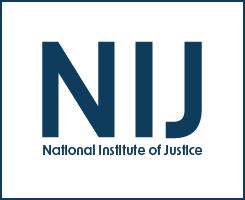American Academy Forensic Sciences (AAFS)
2024 NIJ Forensic Science Research and Development Symposium
NIJ Announces $1.9M to Fund Research in Public Forensic Laboratories in 2023
On September 26, 2023, NIJ announced $1.9 million in funding to support five new projects under its Research and Evaluation for the Testing and Interpretation of Physical Evidence in Publicly Funded Forensic Laboratories (Public Labs R&E) program. Through its forensic science research funding, NIJ continues to improve the examination and interpretation of physical evidence across the community of practice through identification of the most efficient...
Evaluation of the Luxon Ion Source for Rapid Screening in Forensic Laboratories
Director La Vigne Discusses Forensic Research and Development at NIJ
NIJ Director Nancy La Vigne, Ph.D., was interviewed by the American Academy of Forensic Sciences.
Utilizing the "listen, learn, and inform" model is what Nancy La Vigne, the new Director at the National Institute of Justice says will be key in implementing the Forensic Science Strategic Plan. AAFS-TV sits down with La Vigne, fresh in her new role, to discuss how she plans to help researchers and scientists achieve their goals.
See the YouTube Terms of Service and Google Privacy Policy
The State of Standard Development & Tools for Assessing and Implementing Standards
Aptamer-Based Oral Fluid Testing Device for Roadside Screening of Recent Marijuana Use in Drivers
Transition Analysis 3 Age-at-Death Estimation: Past, Present, and Future
Regional and Micro-Environmental Taphonomic Variation and Decomposition in Northern New England
Use of HPLC with Multiwavelength Detection for the Differentiation of Non Ball Pen Inks
Expanding Research to Examine the Impacts of Forensic Science on the Criminal Justice System
In 2004, the National Institute of Justice created the social science research on forensic sciences (SSRFS) research program to explore the impact of forensic sciences on the criminal justice system and the administration of justice. Much of the early research from the SSRFS program focused on DNA processing and the use of DNA in investigations and prosecutions.
See the YouTube Terms of Service and Google Privacy Policy
Expanded Quantitative Cannabinoid Testing in Biological Specimens to Combat the Ever Changing Cannabis Landscape
Measuring the Frequency Occurrence of Handwriting and Handprinting Characteristics
Making Sense of the DNA Backlog - NIJ Conference Panel
Panelists will present findings from two NIJ studies that examined the DNA backlog in law enforcement agencies and crime labs. Panelists will discuss research findings related to new and potential time- and cost-saving approaches.


